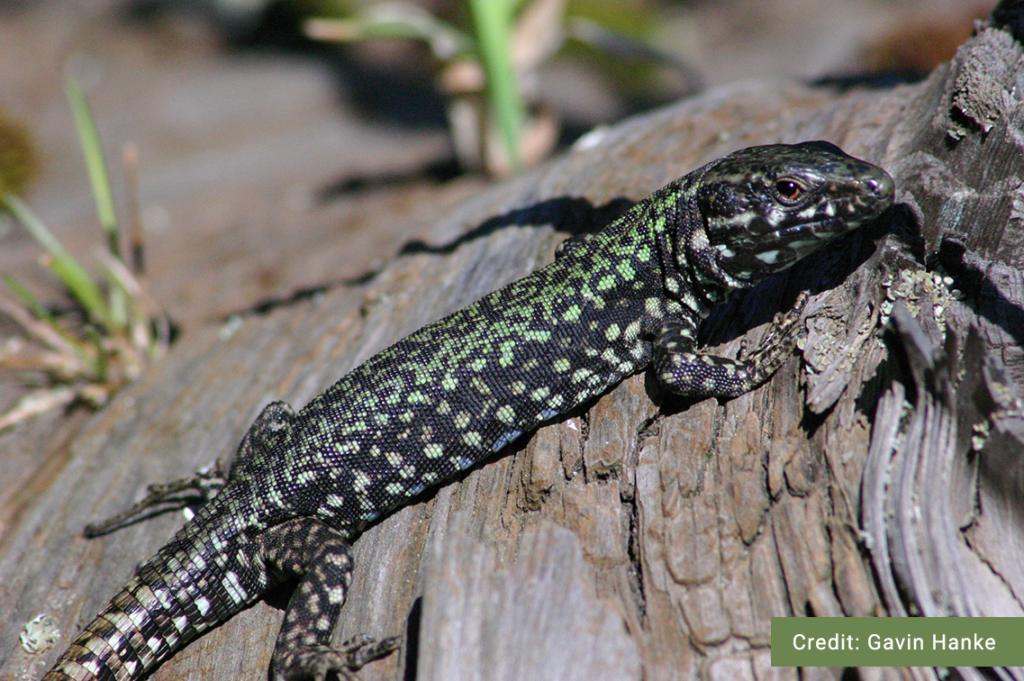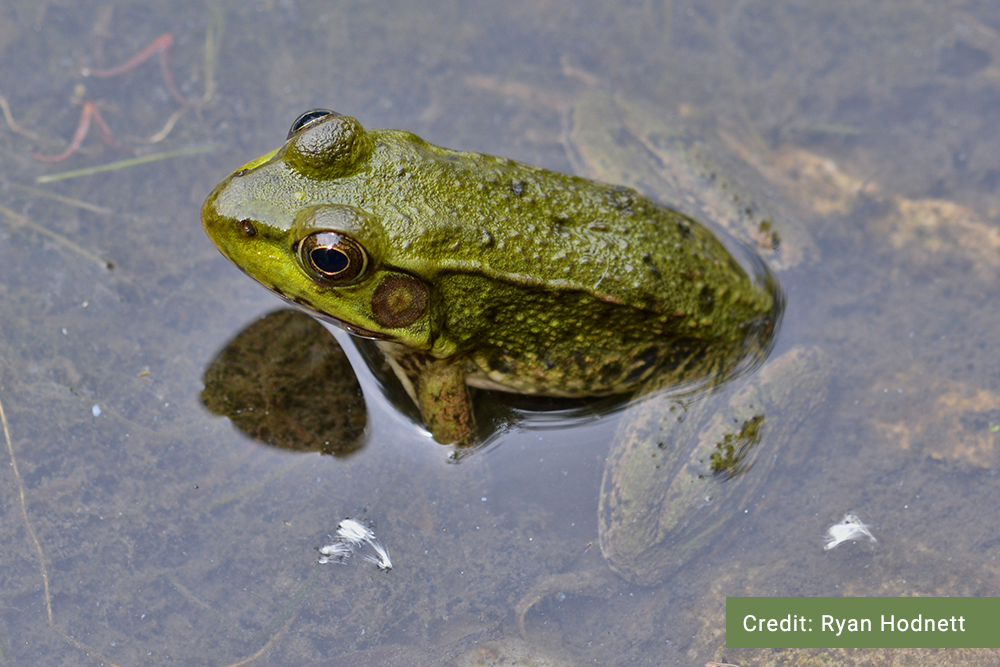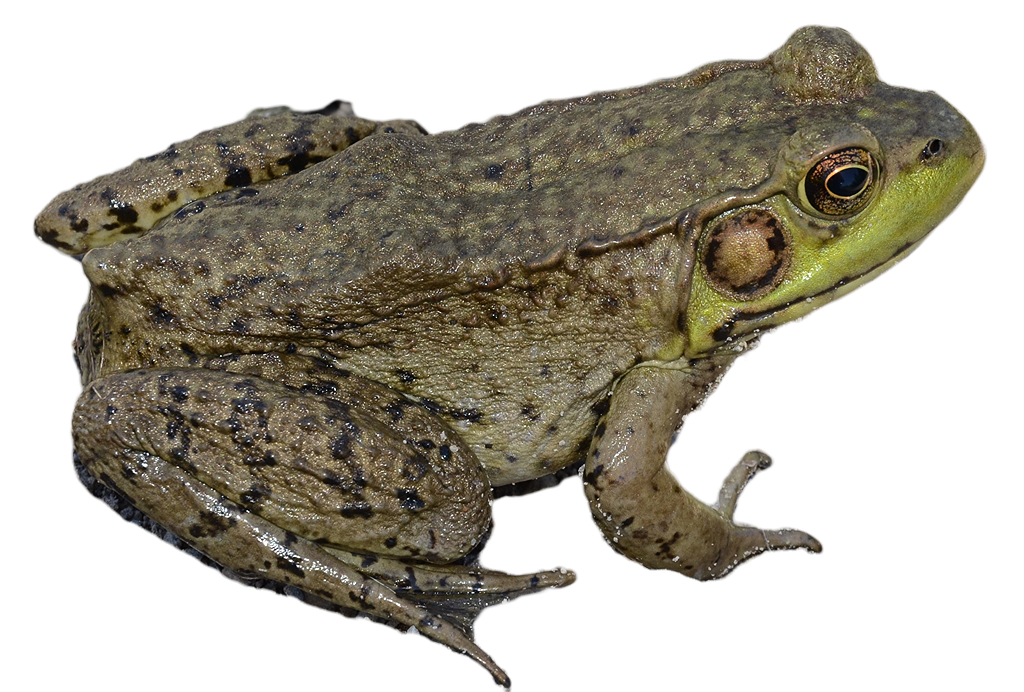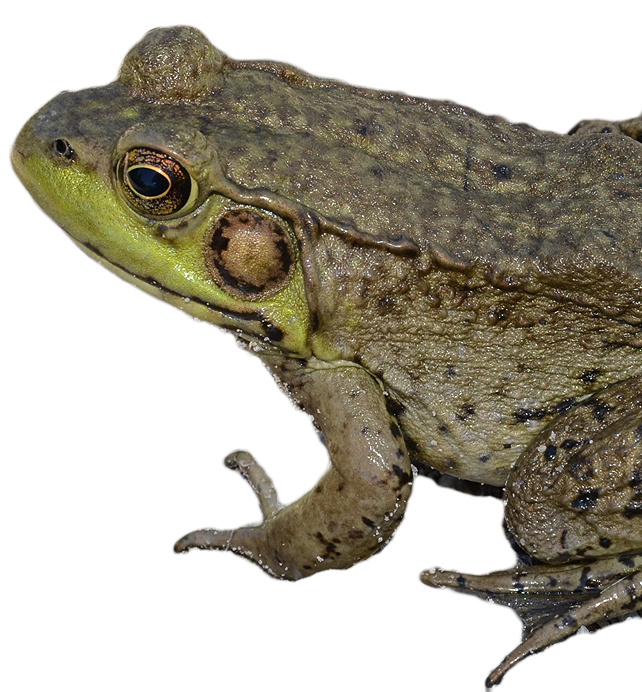Invasive Species
Invasive species are species that are not native to an area, or are outside of their natural distribution area. Since they don’t have natural enemies and constraints like they do in their native habitats, they are able to spread rapidly, dominate natural areas, and outcompete and predate on native species. Invasive species are recognized globally as the second greatest threat to biodiversity (after direct habitat loss due to humans) and have proven to be problematic for indigenous reptile and amphibian species. Invasive species can negatively impact B.C.’s environment, people, and economy.
Common Wall Lizard (Podacris muralis)

American Bullfrog (Lithobates catesbeianus)
American Bullfrogs naturally occur in eastern North America but are considered invasive in British Columbia. They were introduced to B.C. in the 1900’s for frog leg farming purposes. Since this time, Bullfrogs have rapidly spread throughout the Lower Mainland and southern Vancouver Island as well as into western United States. Bullfrogs in B.C. have a huge impact on local ecosystems. They are the largest frogs in Canada (as big as 20 cm in body length), and will eat anything that can fit in their large mouths including other frog species, salamanders, turtles, snakes, lizards and even fish, birds, and small mammals. Bullfrog tadpoles also compete with native frog tadpoles for resources and suitable habitat. In particular Pacific Treefrogs and Red-legged Frogs are negatively impacted by the presence of Bullfrogs. Bullfrogs are also a carrier of Chytrid disease, which is a highly contagious fungus that is detrimental to amphibians.

Red-eared Slider (Trachemys scripta elegans)
Red-eared Sliders are native to the southeastern United States, Mexico, Central America, and Brazil. These turtles have been introduced to B.C. by pet-owners abandoning them in our lakes and ponds. Unfortunately, when pet-owners purchase Red-eared Sliders they do not realize how long they can live (sometimes up to 20-30 years!), and often abandon them when they decide they cannot offer life-long care. Red-eared Sliders introduce diseases to our native turtle species, as well as compete with them for for food, nesting sites and basking habitat – all of which are already limited due to habitat loss. They can be distinguished from the native Western Painted Turtle by their yellow belly and a red streak behind their eye.

Green Frog (Lithobates clamitans)
Green Frogs are native to eastern Canada, but invasive in British Columbia. They are known to displace Oregon Spotted Frogs, an endangered species in B.C.. Their range in the province is currently restricted to southern Vancouver Island and the Lower Mainland.

You can help prevent the spread and impact of invasive species in B.C. by:
- Being a responsible pet owner. This means only adopting a pet if you are willing to care for it throughout its entire life, and NEVER releasing a pet into the wild. This prevents the introduction of new invasive species, and reduces the spread of pre-existing ones.
- Reporting them. If you see an animal that you are concerned might be an invasive species outside of it’s known range, you can report it using the Report Invasives BC mobile app or an online form. Early detection is critical to stopping the spread of invasive species.
- Not moving any live animals in the wild, including eggs, tadpoles, and larvae. This is not only illegal, but has the potential to spread invasive species and disease.


